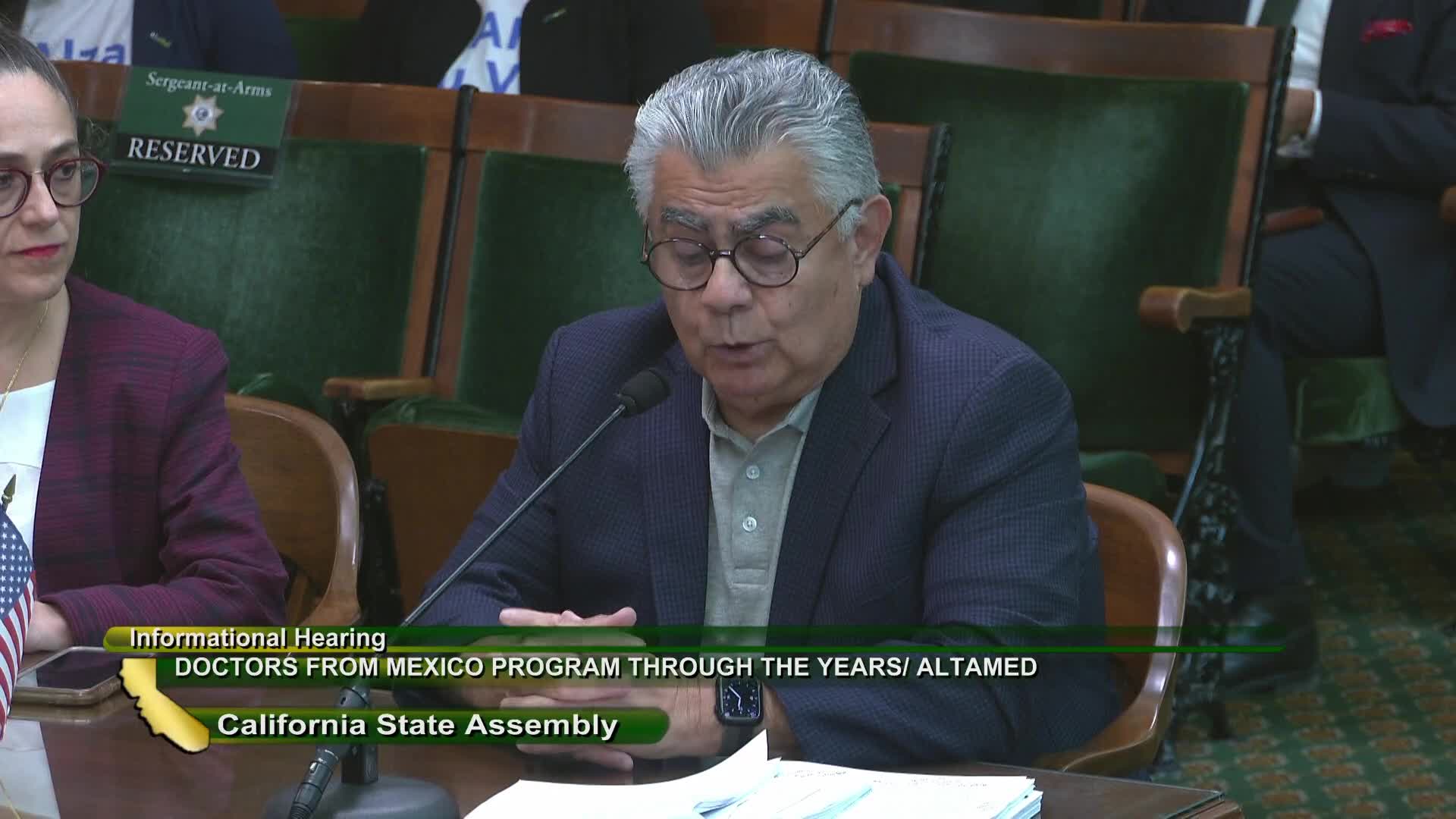California's healthcare crisis demands urgent action for Latino doctors
June 05, 2024 | California State Assembly, House, Legislative, California

This article was created by AI summarizing key points discussed. AI makes mistakes, so for full details and context, please refer to the video of the full meeting. Please report any errors so we can fix them. Report an error »

In a recent government meeting, officials addressed the pressing healthcare challenges faced by California's Latino population, which now constitutes 40% of the state's residents. The discussions highlighted significant gaps in medical staffing, particularly the lack of culturally and linguistically competent healthcare providers to serve diverse communities, especially indigenous populations from Mexico.
The meeting revealed that many clinics in the Southwest, particularly in California, struggle to communicate effectively with patients due to a shortage of medical staff fluent in Spanish and indigenous dialects such as Zapotec, Triqui, and Mixteco. This language barrier has led to misunderstandings in patient care practices, including differing preferences during childbirth and cultural beliefs regarding umbilical cord cutting.
Statistics presented during the meeting underscored the urgency of the situation: only 4% of doctors and 5% of dentists in California were of Hispanic descent as of 1999, and current Latino MD graduation rates suggest that the state will not meet its healthcare needs until the year 2515 without intervention. To address this, legislation has been proposed to facilitate the recruitment of doctors from Mexico, with plans to bring in over 1,000 physicians every three years starting in 2025.
Dr. Eva Perusquia, a participant in the program, shared her experiences working with vulnerable populations, noting that many patients face difficult choices between paying for medications and basic living expenses. She emphasized the importance of health education and prevention, arguing that investing in community health education is more cost-effective than addressing complications later.
The meeting concluded with a call for expanded initiatives to improve access to healthcare, including the establishment of new pathways for medical education in Mexico and the use of telemedicine to connect patients with specialists. The need for immediate action was clear, as California grapples with a healthcare system that mirrors conditions found in developing nations, with a stark shortage of primary care physicians.
The meeting revealed that many clinics in the Southwest, particularly in California, struggle to communicate effectively with patients due to a shortage of medical staff fluent in Spanish and indigenous dialects such as Zapotec, Triqui, and Mixteco. This language barrier has led to misunderstandings in patient care practices, including differing preferences during childbirth and cultural beliefs regarding umbilical cord cutting.
Statistics presented during the meeting underscored the urgency of the situation: only 4% of doctors and 5% of dentists in California were of Hispanic descent as of 1999, and current Latino MD graduation rates suggest that the state will not meet its healthcare needs until the year 2515 without intervention. To address this, legislation has been proposed to facilitate the recruitment of doctors from Mexico, with plans to bring in over 1,000 physicians every three years starting in 2025.
Dr. Eva Perusquia, a participant in the program, shared her experiences working with vulnerable populations, noting that many patients face difficult choices between paying for medications and basic living expenses. She emphasized the importance of health education and prevention, arguing that investing in community health education is more cost-effective than addressing complications later.
The meeting concluded with a call for expanded initiatives to improve access to healthcare, including the establishment of new pathways for medical education in Mexico and the use of telemedicine to connect patients with specialists. The need for immediate action was clear, as California grapples with a healthcare system that mirrors conditions found in developing nations, with a stark shortage of primary care physicians.
View full meeting
This article is based on a recent meeting—watch the full video and explore the complete transcript for deeper insights into the discussion.
View full meeting
